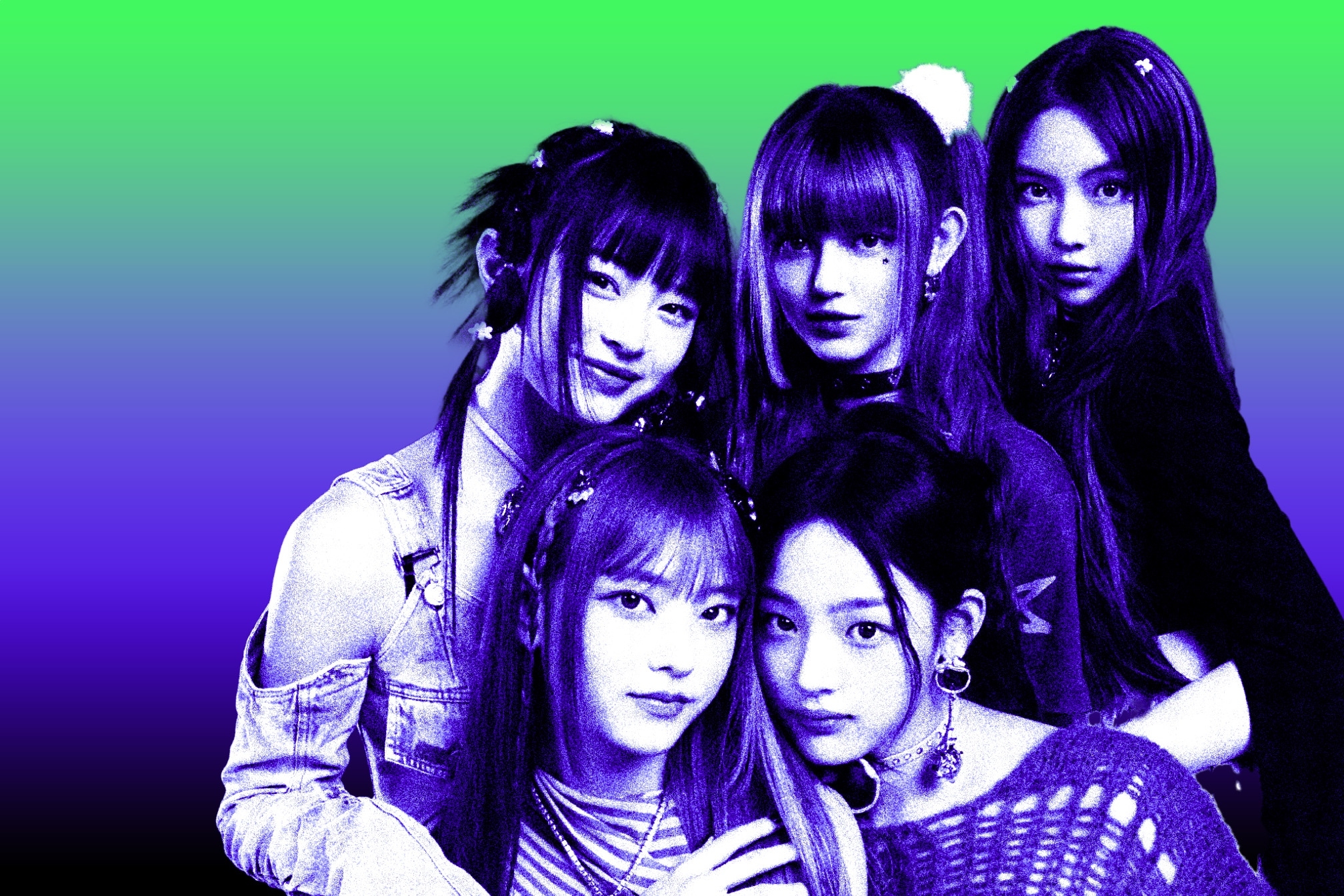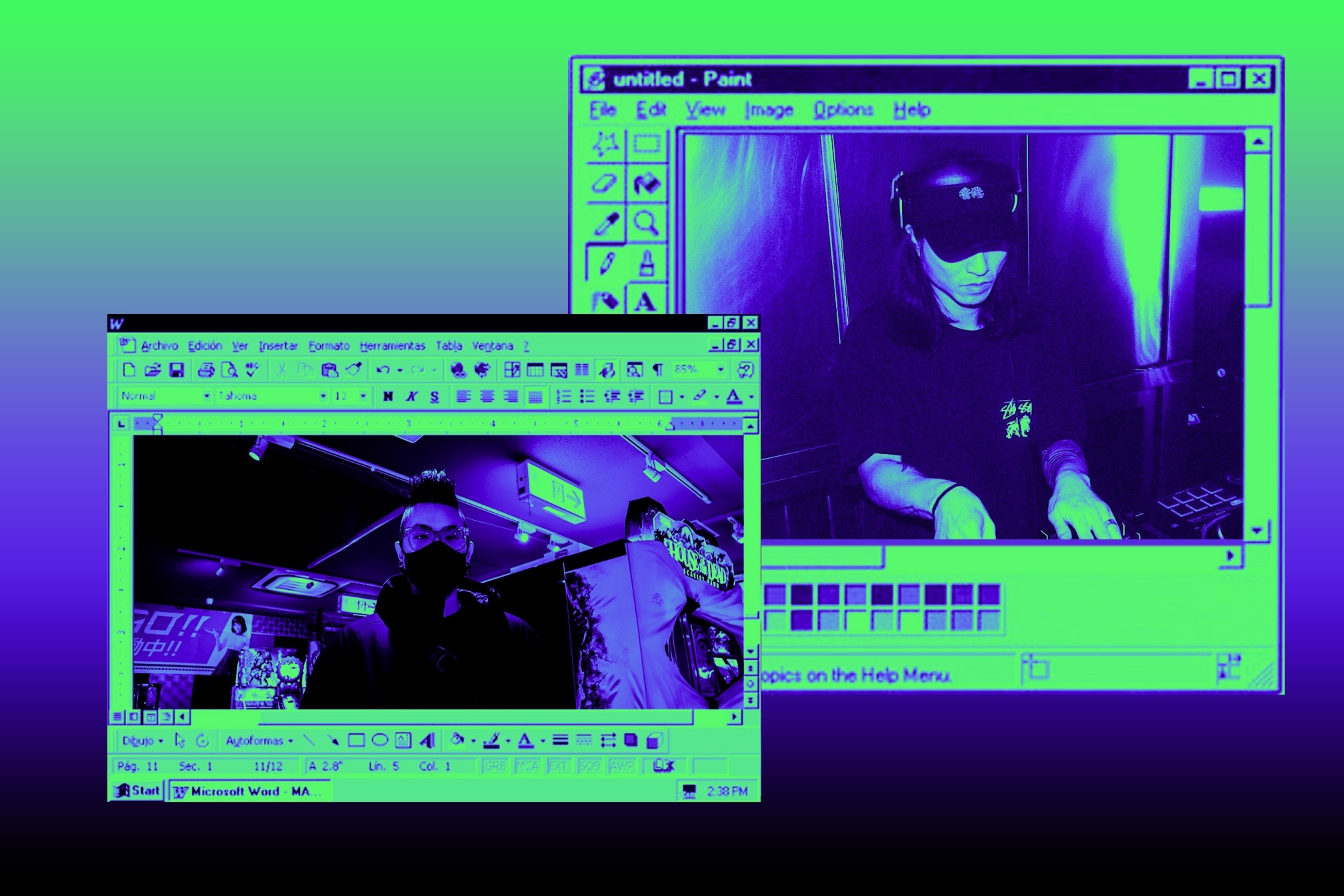 Features
Features
The next phase of K-pop evolution: a genuine approach or an appropriation of genres?
Peter Sabine speaks with Asian artists about the NewJeans phenomenon that's ushering UK garage, Baltimore club, Jersey club, breaks, bass & drum’n’bass into the K-pop aesthetic
K-pop is a chameleon capable of transforming itself into trap, reggaeton, big room EDM, or drum'n'bass. Does the arrival of bass and breaks offer a revolution, or simply constitute the next phase of unbeatable pop formula backed by well-crafted choreography, on-trend sounds, and cooler-than-you aesthetics?
The question is being begged by NewJeans, the teenage quintet consisting of Minji, Hanni, Danielle, Haerin, and Hyein. The girls are breaking the mould with tracks that cleverly utilise elements of UK garage, Baltimore club (b'more), jersey club, breaks, bass, and drum‘n’bass, serving up Y2K pop simultaneously referencing 90s K-pop r'n'b acts like S.E.S.
Whether it’s the breaks and b’more inflexions of ‘Ditto’ or the UK garage two-step, liquid drum'n'bass and Jersey club stylings of ‘Super Shy’, NewJeans have turned heads with their production choices. Like most K-pop acts, blowing up online with well-produced videos and choreography for dance moves is a key driver. The ‘Ditto’ video has been a case in point, inspiring conspiracy theories for its cryptic hints, detailing, and almost b-horror movie directing style.
“NewJeans creative director Min Hee-jin is one of the pioneers of contemporary K-pop aesthetics, she takes a more feminine and experimental approach. NewJeans was released to the world directly without press or fanfare but with several music videos, which was groundbreaking. They have a large quantity of videos with great concepts and shock value, so marketing is really their strength,” says FINGERGAP, a Cantonese footwork artist based in Hong Kong.

The invasion of the underground into K-pop is not shocking given that Western pop has seen a similar approach. Drake put elements of these genres on ‘Honestly, Nevermind’ (2022) and Beyoncé heavily sampled classic house for ‘Renaissance’ (2022). Meanwhile, Pinkpantheress used Adam F’s classic Intelligent drum ‘n’ bass track ‘Circles’ (1997) for ‘Break It Off’ (2021) – a 24-year gap from the original.
“K-pop has been influenced by the UK sound since Shinee’s ‘View’ in 2015 and since then many acts have launched UKG tracks which I consider to be the first wave. With Pinkpantheress and Gen Z TikTok musicians like piri launching this new type of UKG sound, we saw break influences becoming popular in 2022 – NewJeans rode the wave,” FINGERGAP adds.
Read this next: Come on, feel the Japanoise
It can be grating, particularly for underground artists to hear suddenly that a pop act has ‘saved’ their genre from obscurity, when in fact the genre had been doing very well all along. Fans of Baltimore club probably feel grateful that the underrated genre that splices samples and beats is making a comeback.
For Beyoncé, controversy came from not initially giving credit to the likes of Robin Stone, who didn’t know the 90s house hit ‘Show Me Love’ was sampled on ‘Break My Soul’ before her son told her.

“Music is made to be heard and to connect with others, and if you’re inspired by other genres, definitely showcase your influences in your own productions and songwriting process,” says Benjamin Bin Jie Oh, a.k.a. Pressure Kay, a producer and DJ based in Hong Kong.
Read this next: Selective Sounds: our picks for the most eclectic & off-kilter mixes of 2023 so far
Sampling and interpolation (the re-recording and reworking of songs) is nothing new – the debate goes back to before the hip hop era with the likes of The Beatles taking inspiration from black American music. It should be no surprise really given the current clubbing generation’s obsession with nostalgia and 90s music that lost genres are popping up again.
“I believe artists should be inspired from the sounds of the underground and vice versa. Every once in a while, there will be a really good artist that introduces a new sound that they’ve discovered, and we’ll all get inspired from it, producers putting their own variations on it, and tutorials of how the sound can be replicated. It isn’t really piggybacking, some of these sounds will even give birth to new sub-genres, or define an entire era of music,” Bin Jie Oh adds.

Multi-genre Bass music DJ and multimedia artist Jacky Fung, known to his fans as JFÜNG, created a bootleg mix of NewJeans ‘Ditto’ as a bit of fun.
“Actually, I got into them from my girlfriend when she was playing their music all the time. I got brainwashed! It felt like they were so ‘remixable’, with a breakbeat, jungle and d'n'b vibe. It’s very different from the K-pop of the 2000 to 2010s that mimicked US dance and trap scenes where everything was so calculated and marketed, with songs that were perfectly written and choreographed. Now, this new approach is making K-pop and dance music blend into one.”
Read this next: Review: 'Temple Meets Temple' offers mindful dancing in the heart of Seoul
Cantopop, a genre that can feel stuck in the past, has seen artists and producers pushing for more. Recently, the likes of Leo Ku and Delta T explored UK garage in ‘有少少愛’, CK黃斯琪offers Jersey Club stylings in ‘INK’, while Collar tried moombahton and reggaeton in ‘idc’. But does it feel genuine when the underground driven by the likes of Wildstyle, Yack Studio, Hong Kong Community Radio Family, Neon City Records and countless others have been pushing these sounds for years?
From the 90s, mainstream Cantopop artists such as Aaron Kwok, Anthony Wong Yiu Ming, Ekin Cheung, Faye Wong, Ivana Wong, Karen Mok, Kelly Chen, Leon Lai, and LMF, driven by brilliant producers like Alex Fung, have created innovative dance tunes in between the typical ballads Cantopop is known for.
“There are many local musicians who push for new sounds, but they don't have that centralised influence to change the definition of Cantopop, which happened in the 90s when artists had a stable fan base, the music scene was vibrant and the audience more adaptive,” FINGERGAP says.
Read this next: Listen to Closet Yi’s current rotation of South Korean gems
For Pressure Kay, genres blurring will be a continuous narrative in modern music. “Most of the producers that I look up to, whether it’s in Hong Kong or elsewhere, have started to merge multiple genres that inspired them to start their own production journey, which creates this new sound that they can call their own. The people I’ve met that gatekeep their circles, they either get left behind, become irrelevant or don’t make it very far.”
“Why box yourself in one sound and limit yourself when being an artist is all about creating and self-expression?” he adds.
[Art Direction by Adrianna Cheung]
Peter Sabine is a Writer for Mixmag Asia and the founder of Holjeng Media. Follow him on LinkedIn here.


